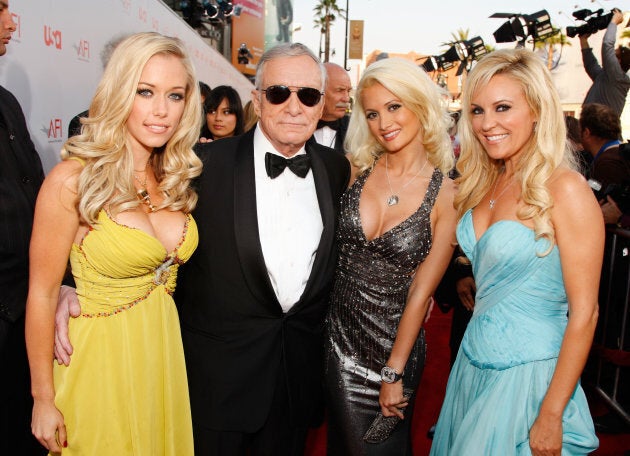Playboy is many things: a magazine that features nude women, an outlet for award-winning journalists, a crusader for women's reproductive rights, an objectifier of women, a tool for men's pleasure, and so much more.
But one thing people tend to forget about the men's mag, whose founder, Hugh Hefner, died on Sept. 27, is that it was also ahead of its time when it came to featuring black women in its pages.
As noted by Indy100, the 63-year-old magazine actually featured its first black model on the cover three years before American Vogue did.
Although the magazine had already featured two black Playmates, Jennifer Jackson in March 1965 and Jean Bell in October 1969, Darine Stern was the first black woman to appear on the cover of Playboy by herself in the magazine's Oct. 1971 issue.
Jackson was the first Black Playmate of the Month, while Bell was the first African American to appear on the magazine's cover alongside four other Playmates.
After her issue was released, Stern became a high-profile model. She died in 1994 at 46 due to complications from breast cancer.
Meanwhile, American Vogue didn't feature their first solo black model, Beverly Johnson, on its cover until 1974.
Sports Illustrated didn't feature their first solo black model until 1997, when supermodel Tyra Banks covered the magazine's winter issue.
It also must be noted that, given the lack of opportunities for black women in the '60 and '70s, it was likely that Hefner and the magazine exploited and took advantage of women of colour, who doubtlessly jumped at the opportunity to pose for the magazine if it meant that it would jump-start their careers.
And despite featuring black models before other mainstream magazines, Playboy still featured a disproportionate amount of white models in its pages and on its covers.
"There were a lot of platinum blonds in the movies in the 1930s, and since my marriage, all my girlfriends have looked like they've stepped right out of a Busby Berkeley musical," Hefner told The New York Times in a 2008 interview.
He also admitted that blond, white women, made up the majority of the models featured in the magazine he founded in 1953.
"We try to get some ethnic diversity, but we do seem to lean in the direction of blonds," he admitted.

Regardless, Hefner and Playboy were a big platform for the civil rights movement, and dedicated more coverage than other magazines to people of colour. For example, Martin Luther King Jr. gave the longest interview he ever granted to the mag in 1965, and the mag also featured interviews in the '60s with Muhammad Ali, Sammy Davis Jr. and Malcolm X.
Looking back at her experience being photographed for Playboy in 1965, Jackson, who became the first African-American women to be featured as a centrefold, told HuffPost in 2011 that she didn't realize the significance of her appearance in the magazine at the time.
"I never looked at it like that. I guess I was the first, but in Chicago we had black doctors, dentists and businessmen living in our neighborhood. You had black people with money who lived well." she said.
I guess I was the first, but in Chicago we had black doctors, dentists and businessmen living in our neighborhood.
Jackson also admitted that she used to feel ashamed for posing nude.
"It was a shock to my sisters because I didn't tell anyone until after I took the picture. And I didn't feel proud of it; I was kind of ashamed of it for a long time, until I went to the playmate reunion back in 1999. And I'm glad that I went, because it was like a closure. Everyone always made a big deal about it but I was always ashamed of it."
I didn't feel proud of it; I was kind of ashamed of it for a long time.
And even though Playboy broke down racial barriers in the '60s, Jackson thinks today's black entertainers still have a ways to go in terms of equality.
"You just get sick of seeing the same parts that they play. They're a little more versatile now, but it's still the gangsters, the prostitutes and all that kind of stuff that black people play. And the only thing that's going to change that is if you get more blacks behind the scenes and into producing, scriptwriting and things like that."
Also on HuffPost: